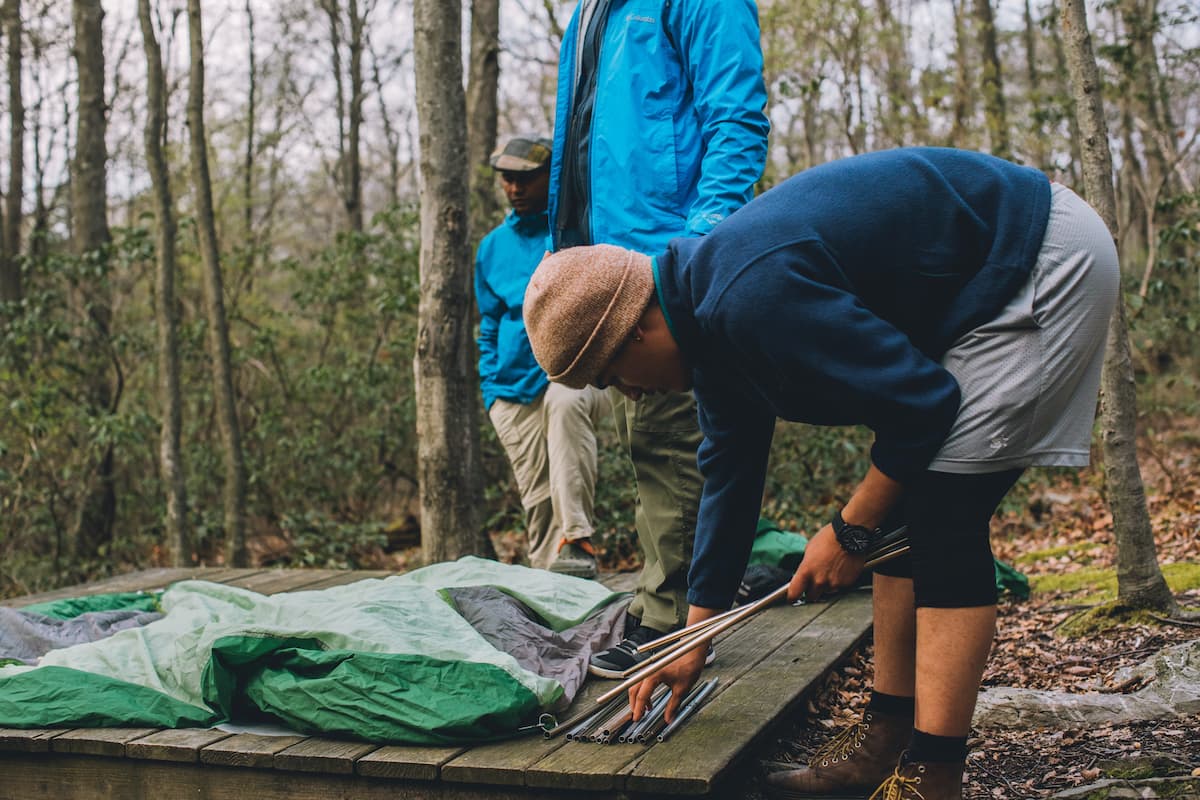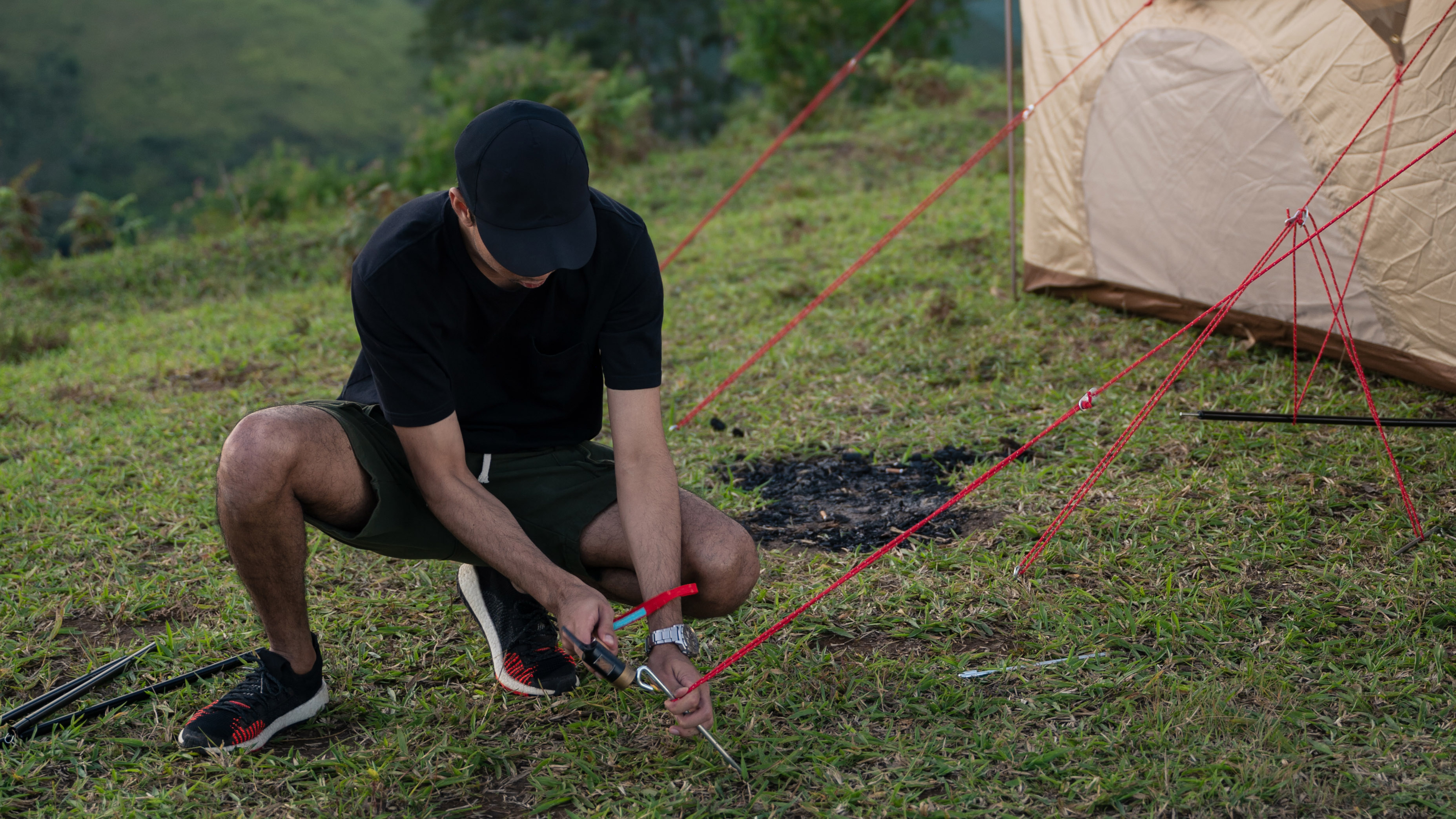I. Introduction

A. Exploring the slang and terminology associated with pitching a tent
Pitching a tent comes with its own unique slang and terminology that adds a sense of camaraderie and understanding among campers. This article focuses on exploring and mastering the slang and techniques of tent setup, enhancing the camping experience.
B. Overview of the article’s focus on mastering the slang and techniques of tent setup
The article aims to provide a comprehensive guide to understanding and mastering the slang and techniques of tent setup. It will delve into the basic and advanced slang terms associated with tent setup, as well as provide step-by-step instructions and pro tips to efficiently pitch a tent.
II. Understanding Tent Setup Slang
A. Basic Slang Terms
- Fly: Refers to the rainfly, which is the outer layer of the tent that provides protection from rain and other elements.
- Guylines: These are ropes or cords that are used to secure the tent and improve its stability, especially in windy conditions.
- Stakes: These are pegs or pins that are driven into the ground to anchor the tent and hold it in place.
B. Advanced Slang Terms
- Tautline Hitch: A knot used to adjust the tension of guylines, allowing campers to easily tighten or loosen the lines as needed.
- Deadman: An anchor point created by burying a heavy object, such as a rock or log, in the ground. Deadmen provide extra stability and support for the tent.
- Footprint: This refers to a protective groundsheet that is placed beneath the tent to prevent wear and tear, and to provide an additional layer of insulation from the ground.
III. Mastering Tent Setup Techniques

A. Step-by-Step Guide
- Unpack and Lay Out the Tent: Start by unpacking the tent and laying out all the components, including the tent body, poles, stakes, and rainfly.
- Assemble Tent Poles and Connect Sections: Follow the manufacturer’s instructions to assemble the tent poles and connect the different sections. This is usually done by inserting the poles into designated sleeves or clips on the tent body.
- Insert Poles and Raise the Tent: Insert the assembled poles into the corresponding grommets or attachment points on the tent body. Gradually raise the tent, ensuring that the poles are securely in place.
- Secure the Tent with Stakes and Guylines: Drive the stakes into the ground through the designated loops or holes on the tent corners and guylines. Adjust the tension of the guylines using knots like the tautline hitch to ensure a taut and stable structure.
B. Pro Tips for Efficient Setup
- Practice Setting Up the Tent Beforehand: Familiarize yourself with the tent setup process by practicing at home or in your backyard. This will help you become more efficient and confident when setting up the tent at the campsite.
- Choose Suitable Campsite and Clear the Ground: Select a campsite with flat and even ground to ensure a comfortable sleeping area. Clear the ground of any rocks, sticks, or debris that could affect the tent’s stability or cause discomfort.
- Utilize Natural Windbreaks and Anchor Points: Take advantage of natural windbreaks, such as trees or large rocks, to provide added protection and stability. Identify anchor points like trees or heavy objects that can be used to secure guylines and increase stability.
- Prioritize Tension and Leveling for a Sturdy Structure: Properly tension the guylines to ensure the tent is taut and stable. Use a level or a flat surface to ensure the tent is pitched on even ground, preventing discomfort and potential damage.
IV. Troubleshooting Common Issues
![]()
A. Sagging Tent
When dealing with a sagging tent, there are a few steps you can take to address the issue:
- Adjusting Guylines and Retightening Stakes: Check the tension of your guylines and make sure they are properly secured to the stakes. Adjusting the tension and retightening the stakes can help restore the stability and shape of the tent.
- Reinforcing the Tent with Extra Guylines: If adjusting the guylines and stakes doesn’t solve the problem, consider adding extra guylines to reinforce the tent. Attach these to additional anchor points or natural features like trees or nearby rocks. This will help distribute the tension and provide more stability to the tent structure.
B. Leaking Rainfly
If you encounter a leaking rainfly, you can take the following steps to address the issue:
- Applying Seam Sealer or Waterproofing Spray: Check the seams of the rainfly for any signs of leakage or areas that may require sealing. Apply a seam sealer specifically designed for outdoor gear to these areas. Additionally, you can use a waterproofing spray to enhance the overall water repellency of the rainfly.
- Ensuring Proper Rainfly Attachment and Tautness: Make sure the rainfly is properly attached to the tent and pulled taut. This will help prevent pooling of water on the rainfly and minimize the chance of leakage. Adjust the tension of the rainfly by properly securing the attachment points and tightening any guylines or tensioning systems.
V. Embracing the Slang and Enjoying the Experience
A. Becoming Fluent in Tent Setup Slang
To fully embrace the experience of tent setup, it can be enjoyable and useful to become fluent in tent setup slang. Incorporate slang terms into conversations with fellow campers, sharing experiences and tips using the unique language of tent setup.
B. Finding Joy in the Process
Embrace the challenge and adventure of tent setup, finding joy in the process itself. Recognize that pitching a tent is not just a means to an end but a part of the overall camping experience. Celebrate successful and efficient tent pitching, appreciating the accomplishment and the sense of self-reliance that comes with it. Enjoy the feeling of satisfaction when your tent is standing tall and ready for adventure.
VI. Conclusion
In conclusion, troubleshooting common issues that arise during tent setup is an important part of mastering the camping experience. Addressing problems like a sagging tent or leaking rainfly by adjusting guylines, retightening stakes, using extra guylines, applying seam sealer or waterproofing spray, and ensuring proper rainfly attachment and tautness can help overcome these challenges. By finding joy in the process and celebrating successful tent pitching, individuals can fully enjoy the camping experience. So, embrace the slang, troubleshoot with confidence, and savor the adventure of pitching a tent.
